Die Verdauung von Gluten
Das Speicherprotein Gluten besteht aus unterschiedlichen Proteinfraktionen, die bei jeder Getreideart aus unterschiedlichen Peptiden bestehen. Je nach Proteinfraktion ergeben sich beim Abbau im Körper toxische Peptide, die zu Veränderungen im Darm beim Zöliakiepatienten führen.
Gluten ist ein Bestandteil von vielen Getreidesorten der Familie der Süßgräser (Gramineae), wie Weizen, Gerste und Roggen. Es dient dort als Speicherprotein und kommt im stärkehaltigen Endosperm, dem Mehlkörper, vor. Die Gehalte liegen bei etwa fünf bis zehn Prozent der Korntrockenmasse und machen somit etwa 80 Prozent des Kornproteins aus.
Zusammensetzung des Glutens
Gluten besteht aus zwei Fraktionen: den Prolaminen, die in Alkohol löslich sind, und den Glutelinen, die in Alkohol unlöslich sind. Je nach Gattung werden die Fraktionen anders bezeichnet. Bei Weizen spricht man von Gliadinen und Gluteninen. Beide Fraktionen bestehen wiederum aus Hunderten verschiedenen Einzelkomponenten. Auf Grund der unterschiedlichen Genvarianten kann jede angebaute Weizensorte anhand der Zusammensetzung ihrer Proteinreserven identifiziert werden – sozusagen ein individueller Fingerabdruck.Abbau von Prolaminen
Prolamine, wie die Gliadine in Weizen, sind reich an Prolin und Glutamin, zwei schwer verdaulichen Aminosäuren, die zu den nicht essenziellen Aminosäuren zählen, da sie der Körper selbst synthetisieren kann. Es ist der hohe Prolin- und Glutamingehalt im Gluten, der einen vollständigen Abbau der Proteine durch die Verdauungsenzyme verhindert. Das führt dazu, dass über einen längeren Zeitraum toxische Oligopeptide, Proteine mit bis zu zehn Aminosäuren, im Dünndarm vorhanden sind. Abgebaut wird Prolin mithilfe einer Oxidase, die Prolin über die Vermittlung von Glutamat-Gamma-Semialdehyd in Glutaminsäure umwandelt. Die Glutaminsäure wiederum muss in Glutamin umgewandelt werden, damit sie weiter zum Gehirn transportiert werden kann, wo sie zur Synthese von Proteinen benötigt wird.
Beispiel für toxische Oligopeptide
- Peptide mit der Aminosäuresequenz LGQQQPFPPQQPY werden als „toxische Peptide“ bezeichnet und bewirken eine Verklumpung von Zellen, programmierten Zelltod, eine Neuanordnung des Strukturproteins Aktin und lösen morphologische Veränderungen im Darm von Zöliakiepatienten ohne Immunogenität für T-Zellen aus.
- Peptide mit der Aminosäuresequenz QLQPFPQPQLPY werden als „T-Zellen-immunogenes Peptid“ bezeichnet, verursachen jedoch keine Veränderungen im Darm von Zöliakiepatienten.
Quellen
- E-Learning (Zöliakie/ Modul 1)
- Coeliac Forum 02/2011
- Ternes, Täufel, Tunger, Zobel: Lebensmittel-Lexikon, Behr's Verlag, 4. Auflage 2005
Weiterführende Informationen
Download
5
Alle anzeigen
E-Learning
1
Alle anzeigen
Fachartikel
5
Alle anzeigen
Präsentationen
8
Alle anzeigen
Studien
4
Alle anzeigen

Kopiervorlage Ernährungsanamnese
Die Ernährungsanamnese ist eine zentrale Hilfe bei der Beobachtung des Ernährungsverhaltens Ihrer Patienten und unterstützt Sie dadurch in der Beratung. Sie können dieses Infoblatt als Kopiervorlage verwenden.

Kopiervorlage Ernährungstagebuch
Dieses Ernähurngstagebuch unterstützt Sie in der Beratung. Sie können es als Kopiervorlage verwenden und Ihren Patienten mitgeben.
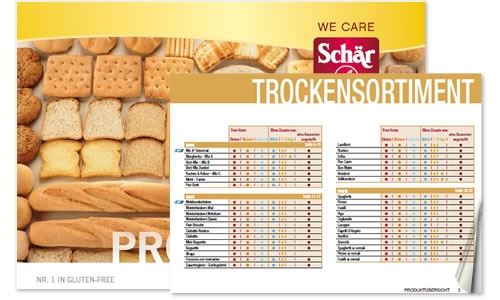
Produktkatalog
Die Produktliste ist ausgerichtet für Fachkräfte. Hier sind die aktuell erhältlichen Produkte aufgelistet mit detaillierten Nährwerten und Zutatenangaben.

Kopiervorlage Ernährungsanamnese
Die Ernährungsanamnese ist eine zentrale Hilfe bei der Beobachtung des...

Kopiervorlage Ernährungstagebuch
Dieses Ernähurngstagebuch unterstützt Sie in der Beratung. Sie können ...
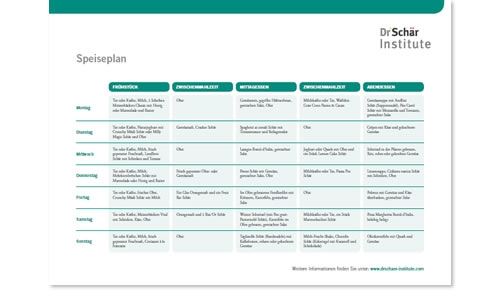
Kopiervorlage glutenfreier Speiseplan
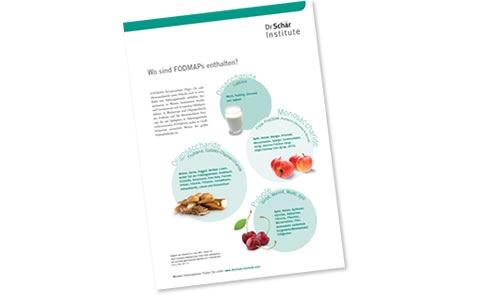
Infoblatt FODMAPs

Produktkatalog
Die Produktliste ist ausgerichtet für Fachkräfte. Hier sind die aktuel...

Modul 3 - Die glutenfreie Ernährung
In diesem Modul geht es um die glutenfreie Ernährung bei einer Zöliakie. Hier werden die konkrete Umsetzung einer glutenfreien Diät erläutert, das Modul führt in die 3-Stufen-Beratung ein und gibt wertvolle Tipps für die Praxis.
Die Lerninhalte wurden gemeinsam mit der Diplom Ökotrophologin Ute Körner erstellt.
Die Lerninhalte wurden gemeinsam mit der Diplom Ökotrophologin Ute Körner erstellt.

Modul 3 - Die glutenfreie Ernährung
In diesem Modul geht es um die glutenfreie Ernährung bei einer Zöliaki...

Das Darmmikrobiom im gesunden und kranken Zustand
Dank neuer Befunde und verbesserter analytischer Verfahren stehen immer mehr Informationen zu unserem Darmmikrobiom zur Verfügung. Es wird deutlich, dass die Art und relative Anzahl der Bakterien, die in unserem Darm vorkommen, eine Schlüsselrolle bei Gesundheit und Krankheit spielen.
>> Weiterlesen... <<<
>> Weiterlesen... <<<

Einfluss des Mikrobioms auf glutenbedingte Erkrankungen
Prof. Dr. med. Yurdagül Zopf und PD Dr. rer. nat. Walburga Dieterich berichten in ihrem Artikel über einen möglichen Zusammenhang zwischen Zöliakie und dem Mikrobiom sowie ihre derzeit laufende Studie, in der sie die Veränderungen der intestinalen Mikroflora bei Patienten mit nachgewiesener Gluten-/Weizensensitivität untersuchen.
>> Weiterlesen... <<<
>> Weiterlesen... <<<

Die Bedeutung der Mikrobiota bei der Entstehung und Therapie der Zöliakie
Dieser Artikel befasst sich mit dem Zusammenhang zwischen Mikrobiota und Zöliakie sowie dem Einsatz von Probiotika in der Therapie.
>> Weiterlesen... <<<
>> Weiterlesen... <<<

Analyse von Ernährungsmustern bei Menschen mit und ohne Zöliakie
Wie ausgewogen ist die Ernährung von Zöliakiepatienten? In diesem Artikel stellt Nicoletta Pellegrini ihre Studie vor, die sich genau mit diesem Thema auseinandersetzt.
>> Weiterlesen... <<<
>> Weiterlesen... <<<

Compliance bei glutenfreier Ernährung
Das Einhalten der glutenfreien Ernährung ist nicht immer einfach. Es gibt verschiedene Faktoren, die das Ernährungsverhalten von Zöliakiebetroffenen beeinflussen.
>> Weiterlesen... <<<
>> Weiterlesen... <<<

Das Darmmikrobiom im gesunden und kranken Zustand
Dank neuer Befunde und verbesserter analytischer Verfahren stehen imme...

Einfluss des Mikrobioms auf glutenbedingte Erkrankungen
Prof. Dr. med. Yurdagül Zopf und PD Dr. rer. nat. Walburga Dieterich b...

Die Bedeutung der Mikrobiota bei der Entstehung und Therapie der Zöliakie
Dieser Artikel befasst sich mit dem Zusammenhang zwischen Mikrobiota u...

Analyse von Ernährungsmustern bei Menschen mit und ohne Zöliakie
Wie ausgewogen ist die Ernährung von Zöliakiepatienten? In diesem Arti...

Compliance bei glutenfreier Ernährung
Das Einhalten der glutenfreien Ernährung ist nicht immer einfach. Es g...
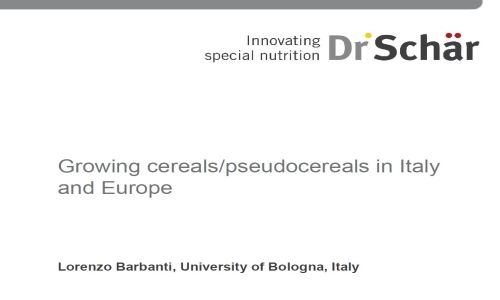
Growing cereals/pseudocereals in Italy and Europe (2013)
Lorenzo Barbanti
Assistant Professor
DipSA (Department of Agricultural Sciences)
University of Bologna, Italy
Internationales Symposium „10 Jahre Glutenforschung und Zukunftsaussichten“, 30.11.2013, AREA Science Park in Triest (Italien)
Assistant Professor
DipSA (Department of Agricultural Sciences)
University of Bologna, Italy
Internationales Symposium „10 Jahre Glutenforschung und Zukunftsaussichten“, 30.11.2013, AREA Science Park in Triest (Italien)
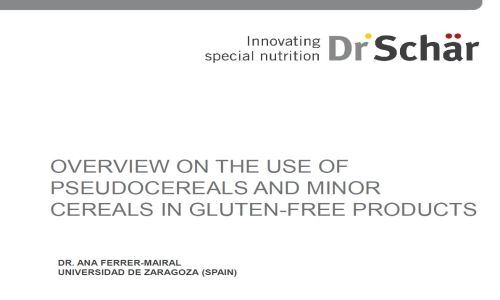
Overview on the use of pseudocereals and minor cereals in gluten - free products (2013)
Ana Ferrer-Mairal
Associate Professor in Food Technology
University of Zaragoza, Spain
Internationales Symposium „10 Jahre Glutenforschung und Zukunftsaussichten“, 30.11.2013, AREA Science Park in Triest (Italien)
Associate Professor in Food Technology
University of Zaragoza, Spain
Internationales Symposium „10 Jahre Glutenforschung und Zukunftsaussichten“, 30.11.2013, AREA Science Park in Triest (Italien)
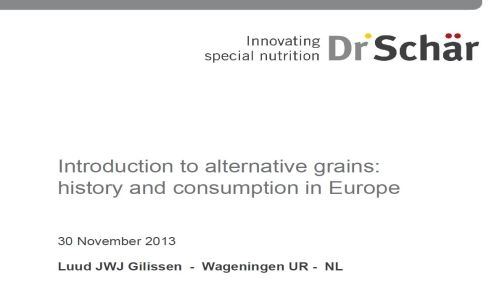
Introduction to alternative grains: history and consumption in Europe (2013)
Luud J.W.J. Gilissen
Senior scientist at Plant Research International (PRI) of Wageningen UR, The Netherlands
Internationales Symposium „10 Jahre Glutenforschung und Zukunftsaussichten“, 30.11.2013, AREA Science Park in Triest (Italien)
Senior scientist at Plant Research International (PRI) of Wageningen UR, The Netherlands
Internationales Symposium „10 Jahre Glutenforschung und Zukunftsaussichten“, 30.11.2013, AREA Science Park in Triest (Italien)
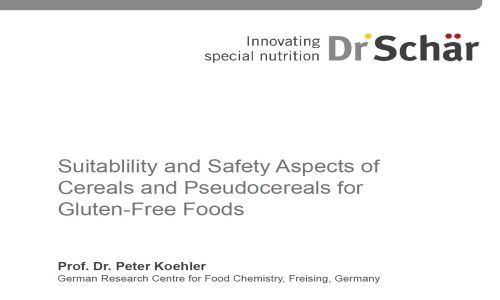
Suitability and safety aspects of cereals and pseudocereals for gluten-free foods (2013)
Peter Koehler
Professor for Food Chemistry
Technical University of Munich, Germany
Vice director of the German Research Centre for Food Chemistry
Internationales Symposium „10 Jahre Glutenforschung und Zukunftsaussichten“, 30.11.2013, AREA Science Park in Triest (Italien)
Professor for Food Chemistry
Technical University of Munich, Germany
Vice director of the German Research Centre for Food Chemistry
Internationales Symposium „10 Jahre Glutenforschung und Zukunftsaussichten“, 30.11.2013, AREA Science Park in Triest (Italien)
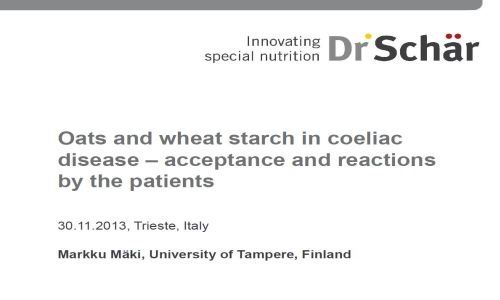
Oats and wheat starch in coeliac disease – acceptance and reactions by patients (2013)
Markku Mäki
Pediatric gastroenterologist and full Professor of Pediatrics at the University of Tampere, Finland
Internationales Symposium „10 Jahre Glutenforschung und Zukunftsaussichten“, 30.11.2013, AREA Science Park in Triest (Italien)
Pediatric gastroenterologist and full Professor of Pediatrics at the University of Tampere, Finland
Internationales Symposium „10 Jahre Glutenforschung und Zukunftsaussichten“, 30.11.2013, AREA Science Park in Triest (Italien)
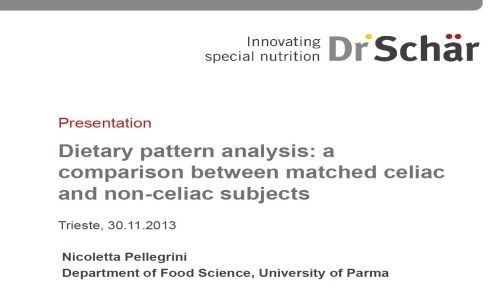
Dietary pattern analysis: a comparison between matched celiac and non-celiac subjects (2013)
Nicoletta Pellegrini
Associate Professor
Department of Food Science, University of Parma, Italy
Internationales Symposium „10 Jahre Glutenforschung und Zukunftsaussichten“, 30.11.2013, AREA Science Park in Triest (Italien)
Associate Professor
Department of Food Science, University of Parma, Italy
Internationales Symposium „10 Jahre Glutenforschung und Zukunftsaussichten“, 30.11.2013, AREA Science Park in Triest (Italien)
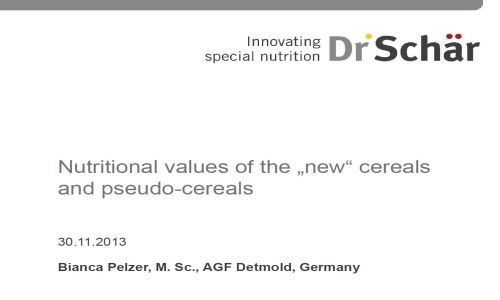
Nutritional values of the „new“ cereals and pseudocereals (2013)
Bianca Pelzer
Association of Cereal Research (AGF)
Detmold, Germany
Internationales Symposium „10 Jahre Glutenforschung und Zukunftsaussichten“, 30.11.2013, AREA Science Park in Triest (Italien)
Association of Cereal Research (AGF)
Detmold, Germany
Internationales Symposium „10 Jahre Glutenforschung und Zukunftsaussichten“, 30.11.2013, AREA Science Park in Triest (Italien)
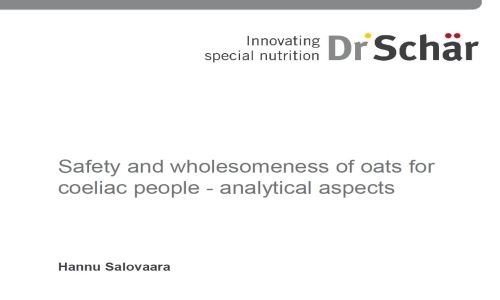
Safety and wholesomeness of oats for coeliac people - analytical aspects (2013)
Hannu Salovaara
Head of Food Technology division
Food and Environmental Sciences, University of Helsinki, Finland
Internationales Symposium „10 Jahre Glutenforschung und Zukunftsaussichten“, 30.11.2013, AREA Science Park in Triest (Italien)
Head of Food Technology division
Food and Environmental Sciences, University of Helsinki, Finland
Internationales Symposium „10 Jahre Glutenforschung und Zukunftsaussichten“, 30.11.2013, AREA Science Park in Triest (Italien)

Growing cereals/pseudocereals in Italy and Europe (2013)
Lorenzo Barbanti
Assistant Professor
DipSA (Department of Agricultur...

Overview on the use of pseudocereals and minor cereals in gluten - free products (2013)
Ana Ferrer-Mairal
Associate Professor in Food Technology
University ...

Introduction to alternative grains: history and consumption in Europe (2013)
Luud J.W.J. Gilissen
Senior scientist at Plant Research International...

Suitability and safety aspects of cereals and pseudocereals for gluten-free foods (2013)
Peter Koehler
Professor for Food Chemistry
Technical University of M...

Oats and wheat starch in coeliac disease – acceptance and reactions by patients (2013)
Markku Mäki
Pediatric gastroenterologist and full Professor of Pediat...

Dietary pattern analysis: a comparison between matched celiac and non-celiac subjects (2013)
Nicoletta Pellegrini
Associate Professor
Department of Food Science,...

Nutritional values of the „new“ cereals and pseudocereals (2013)
Bianca Pelzer
Association of Cereal Research (AGF)
Detmold, Germany
...

Safety and wholesomeness of oats for coeliac people - analytical aspects (2013)
Hannu Salovaara
Head of Food Technology division
Food and Environmen...

Glycaemic index of some commercial gluten-free foods
ABSTRACT
Purpose
Gluten-free products present major challenges for the food industry in terms of organoleptic, technological and nutritional characteristics. The absence of gluten has been shown to affect starch digestibility, thus increasing the postprandial glycaemic response. However, in recent years, gluten-free technologies have been improved, thus possibly modifying this quality parameter. We investigated the glycaemic index (GI) of 10 commercial foods aiming to update the GI values of the most common gluten-free products consumed in Italy.
Methods
The in vivo GI was evaluated for six bakery products and four types of pasta. The postprandial glucose response was obtained in two groups with 10 healthy volunteers each.
Results
The overall GI values ranged from 37.5 for breakfast biscuits to 66.7 for puffed multigrain cake. Breads and pasta had GI values consistently lower than those previously reported in the literature.
Conclusion
The present study showed that several commercial GF products exhibited low and medium GI values, not confirming the previous observations on the high GI of GF. However, considering the multiple formulations and processes for preparation of these products, further studies are recommended.
Resource: Eur J Nutr. 2014 Oct 17.
Francesca Scazzina • Margherita Dall’Asta • Nicoletta Pellegrini • Furio Brighenti
Purpose
Gluten-free products present major challenges for the food industry in terms of organoleptic, technological and nutritional characteristics. The absence of gluten has been shown to affect starch digestibility, thus increasing the postprandial glycaemic response. However, in recent years, gluten-free technologies have been improved, thus possibly modifying this quality parameter. We investigated the glycaemic index (GI) of 10 commercial foods aiming to update the GI values of the most common gluten-free products consumed in Italy.
Methods
The in vivo GI was evaluated for six bakery products and four types of pasta. The postprandial glucose response was obtained in two groups with 10 healthy volunteers each.
Results
The overall GI values ranged from 37.5 for breakfast biscuits to 66.7 for puffed multigrain cake. Breads and pasta had GI values consistently lower than those previously reported in the literature.
Conclusion
The present study showed that several commercial GF products exhibited low and medium GI values, not confirming the previous observations on the high GI of GF. However, considering the multiple formulations and processes for preparation of these products, further studies are recommended.
Resource: Eur J Nutr. 2014 Oct 17.
Francesca Scazzina • Margherita Dall’Asta • Nicoletta Pellegrini • Furio Brighenti

Diets that differ in their FODMAP content alter the colonic luminal microenvironment.
Abstract
OBJECTIVE:
A low FODMAP (Fermentable Oligosaccharides, Disaccharides, Monosaccharides And Polyols) diet reduces symptoms of IBS, but reduction of potential prebiotic and fermentative effects might adversely affect the colonic microenvironment. The effects of a low FODMAP diet with a typical Australian diet on biomarkers of colonic health were compared in a single-blinded, randomised, cross-over trial.
DESIGN:
Twenty-seven IBS and six healthy subjects were randomly allocated one of two 21-day provided diets, differing only in FODMAP content (mean (95% CI) low 3.05 (1.86 to 4.25) g/day vs Australian 23.7 (16.9 to 30.6) g/day), and then crossed over to the other diet with ≥21-day washout period. Faeces passed over a 5-day run-in on their habitual diet and from day 17 to day 21 of the interventional diets were pooled, and pH, short-chain fatty acid concentrations and bacterial abundance and diversity were assessed.
RESULTS:
Faecal indices were similar in IBS and healthy subjects during habitual diets. The low FODMAP diet was associated with higher faecal pH (7.37 (7.23 to 7.51) vs 7.16 (7.02 to 7.30); p=0.001), similar short-chain fatty acid concentrations, greater microbial diversity and reduced total bacterial abundance (9.63 (9.53 to 9.73) vs 9.83 (9.72 to 9.93) log10 copies/g; p<0.001) compared with the Australian diet. To indicate direction of change, in comparison with the habitual diet the low FODMAP diet reduced total bacterial abundance and the typical Australian diet increased relative abundance for butyrate-producing Clostridium cluster XIVa (median ratio 6.62; p<0.001) and mucus-associated Akkermansia muciniphila (19.3; p<0.001), and reduced Ruminococcus torques.
CONCLUSIONS:
Diets differing in FODMAP content have marked effects on gut microbiota composition. The implications of long-term reduction of intake of FODMAPs require elucidation.
Resource: Gut. 2014 Jul 12. pii: gutjnl-2014-307264. doi: 10.1136/gutjnl-2014-307264. [Epub ahead of print]
Halmos EP, Christophersen CT, Bird AR, Shepherd SJ, Gibson PR, Muir JG.
OBJECTIVE:
A low FODMAP (Fermentable Oligosaccharides, Disaccharides, Monosaccharides And Polyols) diet reduces symptoms of IBS, but reduction of potential prebiotic and fermentative effects might adversely affect the colonic microenvironment. The effects of a low FODMAP diet with a typical Australian diet on biomarkers of colonic health were compared in a single-blinded, randomised, cross-over trial.
DESIGN:
Twenty-seven IBS and six healthy subjects were randomly allocated one of two 21-day provided diets, differing only in FODMAP content (mean (95% CI) low 3.05 (1.86 to 4.25) g/day vs Australian 23.7 (16.9 to 30.6) g/day), and then crossed over to the other diet with ≥21-day washout period. Faeces passed over a 5-day run-in on their habitual diet and from day 17 to day 21 of the interventional diets were pooled, and pH, short-chain fatty acid concentrations and bacterial abundance and diversity were assessed.
RESULTS:
Faecal indices were similar in IBS and healthy subjects during habitual diets. The low FODMAP diet was associated with higher faecal pH (7.37 (7.23 to 7.51) vs 7.16 (7.02 to 7.30); p=0.001), similar short-chain fatty acid concentrations, greater microbial diversity and reduced total bacterial abundance (9.63 (9.53 to 9.73) vs 9.83 (9.72 to 9.93) log10 copies/g; p<0.001) compared with the Australian diet. To indicate direction of change, in comparison with the habitual diet the low FODMAP diet reduced total bacterial abundance and the typical Australian diet increased relative abundance for butyrate-producing Clostridium cluster XIVa (median ratio 6.62; p<0.001) and mucus-associated Akkermansia muciniphila (19.3; p<0.001), and reduced Ruminococcus torques.
CONCLUSIONS:
Diets differing in FODMAP content have marked effects on gut microbiota composition. The implications of long-term reduction of intake of FODMAPs require elucidation.
Resource: Gut. 2014 Jul 12. pii: gutjnl-2014-307264. doi: 10.1136/gutjnl-2014-307264. [Epub ahead of print]
Halmos EP, Christophersen CT, Bird AR, Shepherd SJ, Gibson PR, Muir JG.
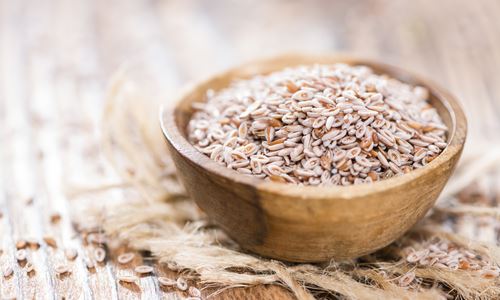
Psyllium as a substitute for gluten in pastas
Abstract
The aim of the present study was to evaluate the effect of replacing gluten in favor of psyllium in pasta’s characteristics. This study takes an exploratory and quantitative approach and was sub-divided into four steps: selection and development of recipes and chemical and sensorial analysis. Modified samples of the pasta presented 100.0% of acceptance for individuals with celiac disease and up to 94.0% for individuals without celiac disease. The most affected characteristics were odor and texture. In terms of chemical composition, reduction of energy value was 26.5% and of proportional fat was 85.4% before being cooked. Substituting wheat flour for a mixture of gluten-free flours with psyllium did not alter preference or acceptability of modified products in relation to standardized ones and amplified feeding options for celiac disease patients. Thus, there were no damages in sensorial characteristics of these products.
Resource: Journal of Culinary Science & Technology Volume 12, Issue 2, 2014
Renata Puppin Zandonadi, Raquel Braz Assunção Botelho and Wilma Maria Coelho Araújo
The aim of the present study was to evaluate the effect of replacing gluten in favor of psyllium in pasta’s characteristics. This study takes an exploratory and quantitative approach and was sub-divided into four steps: selection and development of recipes and chemical and sensorial analysis. Modified samples of the pasta presented 100.0% of acceptance for individuals with celiac disease and up to 94.0% for individuals without celiac disease. The most affected characteristics were odor and texture. In terms of chemical composition, reduction of energy value was 26.5% and of proportional fat was 85.4% before being cooked. Substituting wheat flour for a mixture of gluten-free flours with psyllium did not alter preference or acceptability of modified products in relation to standardized ones and amplified feeding options for celiac disease patients. Thus, there were no damages in sensorial characteristics of these products.
Resource: Journal of Culinary Science & Technology Volume 12, Issue 2, 2014
Renata Puppin Zandonadi, Raquel Braz Assunção Botelho and Wilma Maria Coelho Araújo
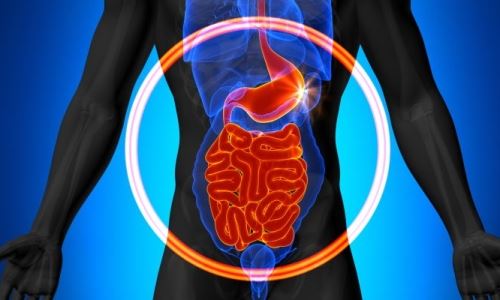
A Diet Low in FODMAPs Reduces Symptoms of Irritable Bowel Syndrome
Abstract
Background & Aims: A diet low in fermentable oligosaccharides, disaccharides, monosaccharides, and polyols (FODMAPs) often is used to manage functional gastrointestinal symptoms in patients with irritable bowel syndrome (IBS), yet there is limited evidence of its efficacy, compared with a normal Western diet. We investigated the effects of a diet low in FODMAPs compared with an Australian diet, in a randomized, controlled, single-blind, cross-over trial of patients with IBS.
Methods: In a study of 30 patients with IBS and 8 healthy individuals (controls, matched for demographics and diet), we collected dietary data from subjects for 1 habitual week. Participants then randomly were assigned to groups that received 21 days of either a diet low in FODMAPs or a typical Australian diet, followed by a washout period of at least 21 days, before crossing over to the alternate diet. Daily symptoms were rated using a 0- to 100-mm visual analogue scale. Almost all food was provided during the interventional diet periods, with a goal of less than 0.5 g intake of FODMAPs per meal for the low-FODMAP diet. All stools were collected from days 17–21 and assessed for frequency, weight, water content, and King's Stool Chart rating.
Results: Subjects with IBS had lower overall gastrointestinal symptom scores (22.8; 95% confidence interval, 16.7–28.8 mm) while on a diet low in FODMAPs, compared with the Australian diet (44.9; 95% confidence interval, 36.6–53.1 mm; P < .001) and the subjects' habitual diet. Bloating, pain, and passage of wind also were reduced while IBS patients were on the low-FODMAP diet. Symptoms were minimal and unaltered by either diet among controls. Patients of all IBS subtypes had greater satisfaction with stool consistency while on the low-FODMAP diet, but diarrhea-predominant IBS was the only subtype with altered fecal frequency and King's Stool Chart scores.
Conclusions: In a controlled, cross-over study of patients with IBS, a diet low in FODMAPs effectively reduced functional gastrointestinal symptoms. This high-quality evidence supports its use as a first-line therapy.
Resource: Gastroenterology Volume 146, Issue 1 , Pages 67-75.e5, January 2014
Emma P. Halmos, Victoria A. Power, Susan J. Shepherd, Peter R. Gibson, Jane G. Muir
Background & Aims: A diet low in fermentable oligosaccharides, disaccharides, monosaccharides, and polyols (FODMAPs) often is used to manage functional gastrointestinal symptoms in patients with irritable bowel syndrome (IBS), yet there is limited evidence of its efficacy, compared with a normal Western diet. We investigated the effects of a diet low in FODMAPs compared with an Australian diet, in a randomized, controlled, single-blind, cross-over trial of patients with IBS.
Methods: In a study of 30 patients with IBS and 8 healthy individuals (controls, matched for demographics and diet), we collected dietary data from subjects for 1 habitual week. Participants then randomly were assigned to groups that received 21 days of either a diet low in FODMAPs or a typical Australian diet, followed by a washout period of at least 21 days, before crossing over to the alternate diet. Daily symptoms were rated using a 0- to 100-mm visual analogue scale. Almost all food was provided during the interventional diet periods, with a goal of less than 0.5 g intake of FODMAPs per meal for the low-FODMAP diet. All stools were collected from days 17–21 and assessed for frequency, weight, water content, and King's Stool Chart rating.
Results: Subjects with IBS had lower overall gastrointestinal symptom scores (22.8; 95% confidence interval, 16.7–28.8 mm) while on a diet low in FODMAPs, compared with the Australian diet (44.9; 95% confidence interval, 36.6–53.1 mm; P < .001) and the subjects' habitual diet. Bloating, pain, and passage of wind also were reduced while IBS patients were on the low-FODMAP diet. Symptoms were minimal and unaltered by either diet among controls. Patients of all IBS subtypes had greater satisfaction with stool consistency while on the low-FODMAP diet, but diarrhea-predominant IBS was the only subtype with altered fecal frequency and King's Stool Chart scores.
Conclusions: In a controlled, cross-over study of patients with IBS, a diet low in FODMAPs effectively reduced functional gastrointestinal symptoms. This high-quality evidence supports its use as a first-line therapy.
Resource: Gastroenterology Volume 146, Issue 1 , Pages 67-75.e5, January 2014
Emma P. Halmos, Victoria A. Power, Susan J. Shepherd, Peter R. Gibson, Jane G. Muir

Glycaemic index of some commercial gluten-free foods
ABSTRACT
Purpose
Gluten-free products present major challenges for...

Diets that differ in their FODMAP content alter the colonic luminal microenvironment.
Abstract
OBJECTIVE:
A low FODMAP (Fermentable Oligosaccharides, Di...

Psyllium as a substitute for gluten in pastas
Abstract
The aim of the present study was to evaluate the effect of...

A Diet Low in FODMAPs Reduces Symptoms of Irritable Bowel Syndrome
Abstract
Background & Aims: A diet low in fermentable oligosacchari...
www.drschaer-institute.com

